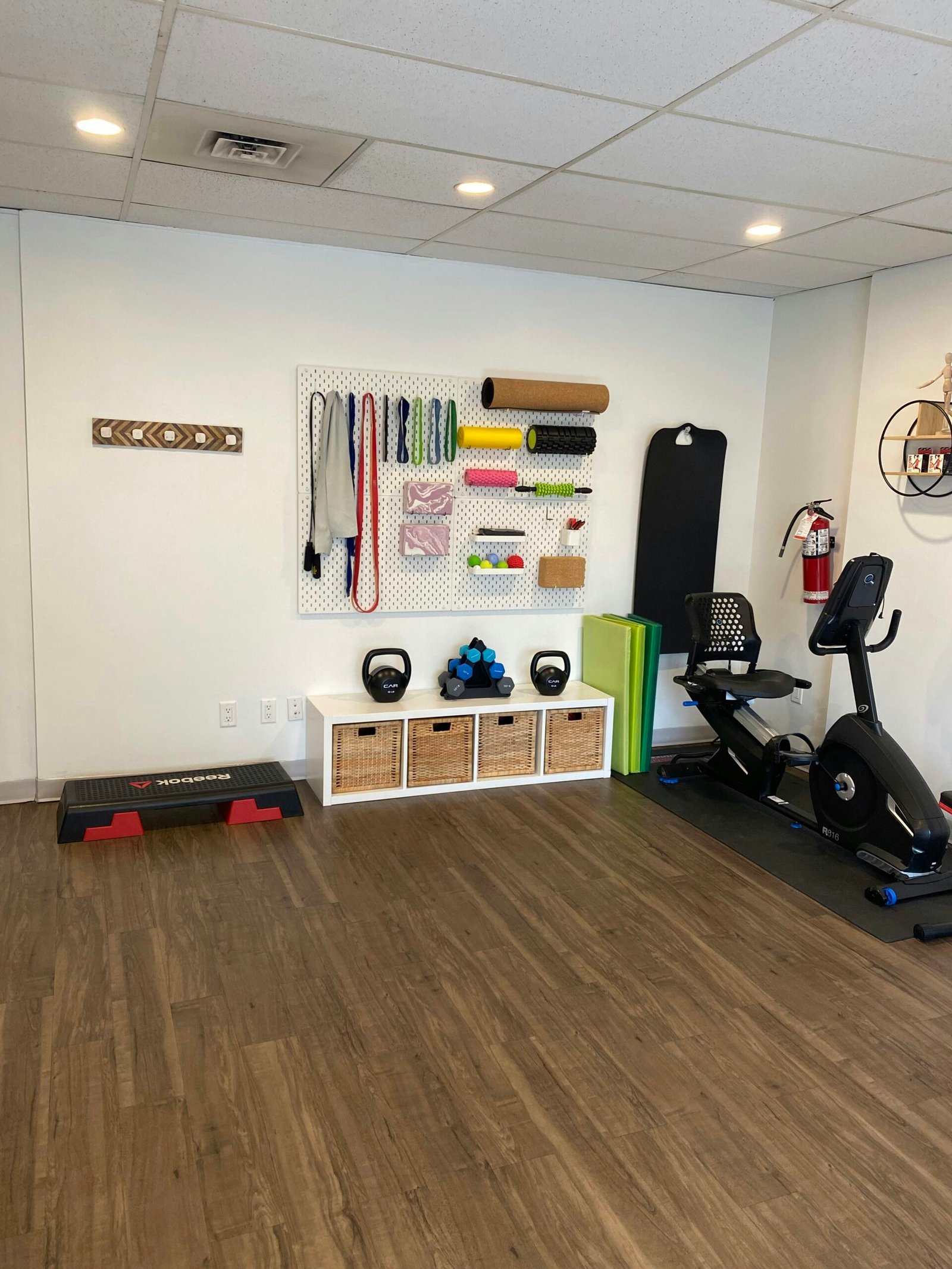Neither Walking nor Biking: This is the Best At-Home Activity to Get Fit, According to Experts

The Popularity of Walking and Biking as Exercises
Walking and biking have gained significant popularity as preferred methods of exercise, largely due to their accessibility and numerous health benefits, including the benefits of walking. These activities are low-impact, making them suitable for individuals of various fitness levels, including those recovering from injuries or managing chronic conditions. The simplicity of these exercises allows individuals to engage in them with minimal requirements for equipment or specialized knowledge, further enhancing their appeal. According to a report by the American Heart Association, about 50% of adults engage in walking as a regular form of physical activity, while biking is not far behind, with an increasing number of cyclists emerging in urban areas.
Experts underline the importance of walking and biking for overall fitness, highlighting that these exercises not only improve cardiovascular health but also contribute to mental well-being. Statistics indicate that individuals who incorporate walking or biking into their daily routines experience reduced stress levels and improved mood. A study published in the Journal of Physical Activity and Health found that participants who walked or biked regularly were 30% less likely to experience symptoms of depression compared to those who did not engage in these activities.
The ease of participation is another major factor driving the reliance on walking and biking for physical activity. Individuals can easily integrate these forms of exercise into their daily lives, whether by taking a brisk walk during lunch breaks or biking to work. The social aspect also plays a crucial role; many people enjoy walking or biking in groups, which can foster a sense of community while promoting accountability among participants. Furthermore, these activities are often associated with positive health outcomes, including weight management, improved cardiovascular fitness, and enhanced quality of life. As a result, walking and biking remain leading choices in the pursuit of fitness and overall health, showcasing the benefits of walking as a primary exercise method.
Limitations of Walking and Biking for Fitness Goals
Walking and biking are widely recognized for their cardiovascular benefits and accessibility, appealing to many individuals seeking to enhance their fitness levels. However, these activities come with notable limitations that may hinder achieving comprehensive fitness goals. While they effectively improve heart health and endurance, they often fall short in areas such as strength training and flexibility development.
One major limitation of both walking and biking is their minimal impact on muscle strength. While these exercises engage muscles to a certain extent, they do not provide the resistance needed for substantial strength gains. Individuals aiming to increase muscle mass or enhance overall strength may find walking and biking inadequate for their objectives. For comprehensive fitness, incorporating resistance training, such as weight lifting, is essential in order to challenge the muscles sufficiently and achieve noticeable improvements.
Moreover, flexibility is another area where walking and biking may not suffice. These activities lack the range of motion exercises that promote flexibility, which is crucial for overall mobility and injury prevention. While they may improve aerobic capacity, individuals focused on enhancing their flexibility may need to engage in additional practices such as yoga or targeted stretching regimens.
Environmental factors and time commitments are also pertinent. Individuals living in regions with harsh weather conditions may find it difficult to maintain a consistent walking or biking routine. Additionally, for those with limited time availability, these activities may not yield the desired physical results within the constrained exercise window. The requirement for specific fitness outcomes may dictate the necessity for more varied exercise routines, as relying solely on walking and biking may limit overall fitness advancements.
The Rise of At-Home Fitness Activities
In recent years, a notable shift has occurred in the fitness landscape, as more individuals are opting for at-home exercise routines rather than traditional gym workouts or outdoor activities. This trend has been significantly accelerated by various global events, which compelled many to seek alternatives that ensure both safety and convenience. As people navigate changing circumstances, the rise of at-home fitness activities has become a defining feature of the contemporary fitness culture.
The convenience of at-home workouts cannot be overstated. Individuals can engage in a diverse array of exercises from the comfort of their homes, eliminating the need for commute time and allowing for a more flexible schedule. This flexibility is particularly appealing to those with busy lifestyles or family commitments. Online fitness resources, such as video demos, live classes, and digital coaching, have surged in popularity, providing users with a plethora of options to explore different types of exercise. Whether it involves strength training, yoga, pilates, or high-intensity interval training (HIIT), there is something for every fitness level and preference.
Moreover, the personalized nature of at-home fitness activities allows individuals to tailor routines according to their unique needs. Many experts in the fitness industry emphasize the importance of such personalization, noting that self-directed workouts can foster a greater sense of autonomy and progress. Furthermore, the growing availability of innovative fitness technologies, such as smart equipment and mobile applications, enhances the home fitness experience by offering real-time feedback and engaging features that keep users motivated.
Experts have expressed their recognition of this widespread trend, highlighting the positive impact at-home activities can have on physical and mental well-being. As the fitness community continues to adapt to these changing dynamics, it is clear that the at-home fitness movement is not merely a temporary solution; it is likely to become a lasting facet of healthy living.
The Best At-Home Activity for Fitness: Insights from Experts
When exploring at-home activities that can lead to substantial fitness improvements, experts consistently highlight high-intensity interval training (HIIT) as a superior option compared to traditional walking or biking, emphasizing the benefits of walking as a foundational exercise. HIIT stands out due to its unique combination of cardiovascular and strength training, enabling individuals to achieve an efficient workout within a fraction of the time typically required for other activities.
One of the primary benefits of HIIT is its capability to elevate heart rates quickly, promoting enhanced cardiovascular fitness. This activity alternates short bursts of intense exercise with rest or low-intensity periods, effectively maximizing calorie burn in a brief period. According to Sarah Johnson, a certified personal trainer, “HIIT workouts improve both aerobic and anaerobic fitness levels. Just 20-30 minutes of HIIT can yield results equivalent to longer sessions of moderate walking or casual biking.”
In addition to cardiovascular improvements, HIIT significantly contributes to muscular strength and endurance. Many routines incorporate bodyweight exercises such as squats, push-ups, and lunges, which target multiple muscle groups simultaneously. This not only enhances muscle tone but also increases metabolic rate, allowing for continued calorie burn even after the workout has concluded. “The beauty of HIIT lies in its versatility; you can mix and match exercises based on your fitness level,” mentions fitness expert John Smith.
Flexibility is another key component of overall fitness. Incorporating dynamic stretches and cooldown exercises within HIIT sessions can yield greater flexibility and range of motion. For those new to this approach, starting with 15-20 minute workout sessions a few times per week can seamlessly transition into a more active lifestyle.
The integration of mindfulness techniques, such as focused breathing and awareness of body movement during HIIT, enhances mental well-being. Thus, not only does HIIT improve physical health, but it can also bolster mood and reduce stress levels. Therefore, it is advisable for readers to consider embracing HIIT as a fitness staple, combining efficiency with comprehensive health benefits.


